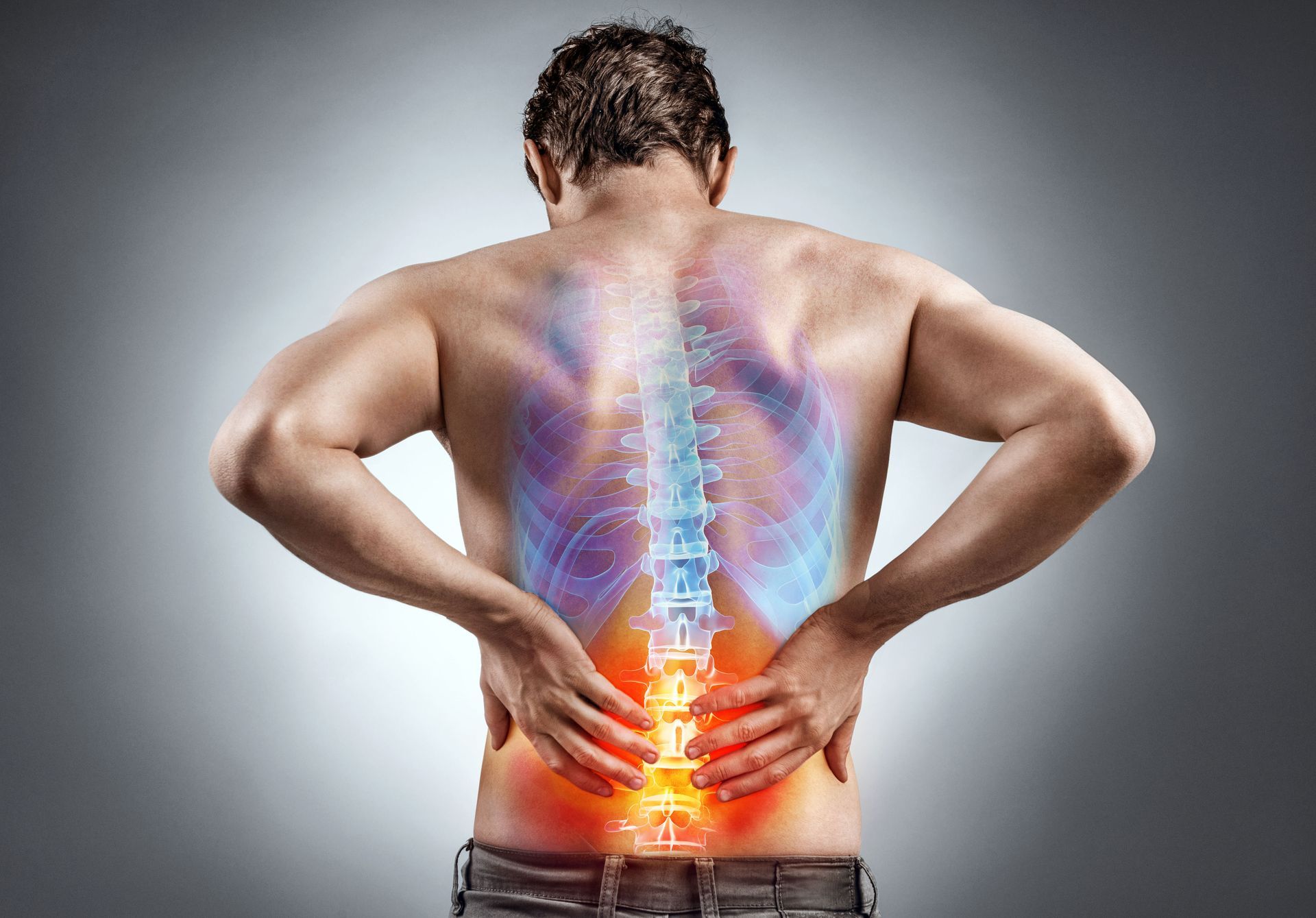Blog
Discover Life Chiropractic

Understanding Vertigo and Dizziness: How Chiropractic Care Can Help If you’ve ever felt the world spin around you or experienced lightheadedness that threw you off balance, you’re not alone. Vertigo and dizziness are two of the most common reasons people visit a healthcare provider—and yet, they’re also some of the most commonly misunderstood conditions. At Discover Life Chiropractic, we specialize in identifying the real root causes behind vertigo and dizziness—often hidden in plain sight within the upper cervical spine. Our unique approach, including the highly effective Blye Cranial Technique, allows us to deliver consistent, long-term results to patients who’ve tried everything else without success. What’s the Difference Between Vertigo and Dizziness? While often used interchangeably, vertigo and dizziness are not the same: Vertigo is the sensation that you or your environment is spinning or moving when no actual movement is occurring. It often comes with nausea, loss of balance, and difficulty standing or walking. Dizziness is a more general term that can describe lightheadedness, unsteadiness, or a feeling of being faint. Understanding the difference is important, but identifying the cause is even more critical. The Cervical Spine Connection One of the most overlooked sources of vertigo and dizziness lies in the upper cervical spine—the top bones of your neck (C1 andC2) that protect the brainstem and coordinate balance signals from your eyes, inner ear, and body. Research and clinical experience have shown that misalignments or instability in the upper cervical spine can disrupt the neurological signals responsible for balance and spatial orientation. This can result in symptoms of vertigo and dizziness, even when no inner ear problem is found. At Discover Life Chiropractic, we use upper cervical stress x-rays to look for excessive motion or misalignment that doesn't show up on standard imaging. This allows us to detect issues that are often missed by traditional healthcare providers. The Myth of the “Crystals in Your Ear” A common diagnosis given to patients with vertigo is BPPV (Benign Paroxysmal Positional Vertigo), which is thought to result from calcium crystals (otoconia) dislodging into the inner ear’s semicircular canals. While BPPV can be a real condition, it is frequently misdiagnosed—especially when the symptoms persist or don't respond to simple maneuvers like the Epley. In our clinical experience, many patients who were told they had inner ear crystals actually had underlying cervical spine dysfunction that was triggering or mimicking vertigo symptoms. Once this was addressed through precise chiropractic adjustments, the symptoms resolved—often permanently. The Blye Cranial Technique: A Unique Advantage Discover Life Chiropractic is one of the few clinics to incorporate the Blye Cranial Technique, a gentle, hands-on method designed to restore motion and alignment to the cranial bones and upper cervical spine. This technique is especially effective in balancing the neurological and structural systems that control equilibrium and spatial orientation. By combining Blye Cranial Technique with spinal-specific care, we’ve helped countless patients eliminate vertigo and dizziness—even after years of frustration and failed treatments. Don’t Just Cope—Get the Right Diagnosis and Care If you’re tired of living with vertigo or dizziness—or if you’ve been told it’s “just crystals” or “in your head”—it may be time for a second opinion. Call Discover Life Chiropractic today to schedule a consultation. We’ll take the time to understand your symptoms, evaluate your spine using cutting-edge diagnostics, and create a customized care plan to get you steady on your feet again. 📞 253 472-4400 📍 5015 Tacoma Mall Blvd. E-102 Tacoma, WA 9840 Balance is possible. Let’s discover what’s really behind your symptoms—together.

Why Traditional X-Rays Can Miss the Real Cause of Your Back Pain If you’ve been struggling with chronic back pain, you’ve probably already had an X-ray—or even several. But what if those “normal” results are missing something important? At Discover Life Chiropractic in Tacoma, we often see patients who were told nothing is wrong, even though their pain is real and persistent. The problem? Traditional static X-rays only tell part of the story. Here's why that matters—and how our approach can finally uncover what’s really going on. The Limitation of Standard X-Rays Most chiropractors and medical providers take X-rays while you're standing still in a neutral position. These images are helpful for identifying things like fractures, dislocations, or signs of arthritis. But if your pain is caused by instability in your spine—like stretched or damaged ligaments—a static image simply won’t catch it. Imagine trying to diagnose a sprained ankle without asking the patient to move it. You’d miss how unstable it really is. The same principle applies to your spine. The Hidden Culprit: Ligament Damage and Spinal Instability Back pain that doesn’t respond to rest, medication, or even traditional chiropractic care is often rooted in ligamentous injury—especially after car accidents or repetitive strain. Ligaments are the tough tissues that hold your spine together and allow it to move safely. When they’re stretched or torn, your spine can shift too much between movements. This is called excessive motion or spinal instability, and it can cause chronic pain, nerve irritation, and even disc problems. Unfortunately, you can’t see this motion on a standard X-ray. But we can—with the right tools. What Makes Our Stress X-Rays Different At Discover Life Chiropractic, we use a technique called spinal kinetics stress X-rays. This involves taking images of your spine while you're in different positions—like bending forward or backward—so we can assess how your vertebrae move in real time. We’re not just looking at bones—we’re measuring motion between them. With advanced software, we can quantify how much one vertebra shifts compared to the one below it. This reveals areas of instability that traditional films would miss entirely. Why This Matters for Your Recovery Once we identify where the instability is, we can design a treatment plan that doesn’t just mask symptoms—it fixes the root issue. That may include: Specific spinal adjustments tailored to the unstable segments Cranial work (especially for headaches or whiplash cases) Soft tissue mobilization Custom ligament strengthening exercises Disc hydration and spinal decompression therapies When your spine moves the way it’s supposed to, pain naturally decreases and function improves. Don’t Settle for “Nothing’s Wrong” When You Know Something Is If you’ve been told your X-rays look normal, but you're still hurting, it’s time for a second opinion—with a deeper look. Discover Life Chiropractic specializes in uncovering the hidden causes of chronic pain, using tools that go beyond the basics. 📍 Located in Tacoma and serving surrounding communities, we're here to help you finally get the answers—and relief—you’ve been searching for. Book your consultation today and let’s find out what your spine is really telling us.

Chronic Lower Back Pain and Undiagnosed Spinal Instability Low back injuries are the number one cause of chronic pain and disability in the world today. That’s right, more people suffer from low back problems than any other condition in the world. This means that almost all of us are affected by chronic low back pain – either we have it or someone we know has it. In addition to being the most common form of chronic pain, low back pain is also the most expensive condition on the injury market. In fact, it is more expensive than 300 other medical conditions and has a huge financial impact on those who suffer from it. According to the National Safety Council, the medical cost of caring for an injury is $42,000. That is simply an unsustainable number. So how do we lower the cost of caring for those with low back pain? By properly understanding the underlying cause of the pain. The Problem with Low Back Pain Diagnosis The most common diagnosis of low back pain or injury is “nonspecific mechanical low back pain.” This means that the cause of the problem is a physical thing, but we don’t know for sure what that is. Needless to say, that vague diagnosis is not helpful. This leads to astronomical medical costs because doctors don’t know what they are treating. Getting Specific with the Diagnosis If we know what is causing low back pain or injuries, then we can specify treatment and get patients back to work and living a normal life faster and with less cost. This is good news for everyone. So, what is the diagnosis? Spinal instability. Most doctors today do not understand spinal instability and it is costing us millions of dollars a year. How to Diagnose Spinal Instability The good news is that spinal instability is easy to diagnose by clinically correlating excessive motion found with stress x-rays and the clinical correlation of a motor, sensory or pain problem at that spinal motion unit level. Stress X-rays are specialized x-rays that show intersegmental motion. Board certified medical radiologists can accurately measure for any motion problems directly from the stress x-rays. These measurements should always be performed by an independent unbiased third party that has a lot of experience performing these procedures. They should be performed independent of the treating provider as the findings can drive serious injury benefits and so treating provider bias should always be ruled out. Once you have the intersegmental motion of each spinal motion unit imaged, you can then easily correlate with the patient’s examination findings and determine the level and the severity of any spinal ligament injury and any spinal instability that it has been left behind and now causing the patient a great deal of trouble. This of course leads to more accurate injury analysis and diagnosis so more responsive treatment can be promoted. Understanding Low Back Ligaments Spinal ligaments are not really that strong and their stability is dependent on the muscles that surround them. If you place a 10-pound weight on your chest, then you add 100 pounds of pressure on your lower back. If you push it 25 inches from your chest, then there is now 250 pounds of pressure on the lower back. That’s enough pressure of course to damage every single ligament in your spine. So why doesn’t your ligament get damaged right then and there? Because there is a coordinating system embedded in the ligaments called mechanoreptors that immediately recognize the pressure and causes the muscle system to instantaneous correction for stability need. However, when a ligament gets damaged, that system malfunctions. This leads to spinal instability. If you’re suffering from chronic lower back pain and haven’t had stress x-rays to determine spinal ligament instability you are missing the most common cause. Call Discover Life Chiropractic at 253 472-4400 and get relief quickly.

How Cranial Chiropractic Therapy Can Provide Effective Headache Relief Among the disorders that prey on our nervous system, headaches take a significant share, with research showing they affect 25% of households in the U.S. and over 1 billion people worldwide. Headaches can seriously disrupt our lives and impact our productivity, straining relationships, and harming our overall well-being. Unfortunately, many people don’t think migraine issues are that important, meaning they end up suffering quietly without adequate treatment. If unchecked, headaches can lead to long-term negative effects like depression, sleep deprivation, and chronic pain. Cranial chiropractic therapy offers a holistic solution for headache relief by targeting the underlying issues and can be a panacea for persistent or chronic pain. What is Cranial Chiropractic Therapy and how does it work? Cranial chiropractic therapy is a gentle, non-invasive and hands-on treatment that alleviates different kinds of conditions like headaches, vertigo/dizziness, migraines, and other conditions like anxiety. Cranial imbalances occur when someone experiences trauma, stress, or birth complications. Bad posture can also contribute to this disorder. At Discover Life Chiropractic we use the Blye Cranial Technique, a chiropractic adjustment method that relieves the skull of tension resulting from poor blood flow and circulation of cerebrospinal fluid. Rather than rely solely on manual manipulation of the cranial plate, the Blye Cranial Technique uses a specialized Activator instrument to apply the adjustments. Dr. Hendrickson has been practicing this technique for over 20 years and is the only doctor in the south sound using this technique. Cranial chiropractic therapy methods like the Blye Cranial Technique help your brain function at its best, allowing other connected parts of your body function more fluently through self-regulation, self-correction, and self-healing. Cranial adjustment can be administered in addition to other forms of treatment like medication or physical therapy. Procedure Treatment usually begins with a brief consultation with the chiropractor to pinpoint the areas of concern. The patient, while fully clothed, proceeds to the chiropractic table and lies on it face up. The chiropractor carries out leg-length reflex testing to identify areas of tension or imbalance in the patient’s skull by detecting any discrepancies in their responses. Using specific tests they also identify which cranial bones are misaligned or restricted. The chiropractor then places an Activator instrument on the misaligns plate and adjusts to restore normal motion. This will allow the bone to continue to move adapting to the pressure changes that occur during the day. What Are The Benefits of Cranial Chiropractic Therapy? Cranial therapy is a gentle, non-invasive approach to pain treatment involving minimal risks and side effects. Apart from managing pain and reducing stress, it is known to improve sleep and overall well-being. The benefits of cranial therapy include: Pain relief • Alleviates headaches, neck pain, and back pain • Relieves chronic pain and migraines • Helps people with tinnitus by relaxing the ear muscles Stress management • Relaxes the nervous system, alleviating anxiety and stress levels • Releases emotional blockages stored within the body • Cranial therapy has relaxing effects which can improve your quality of sleep, enhance your mood, and boost overall health Who Can Benefit From Cranial Therapy? Anyone who has suffered head trauma, or experiences nerve imbalances should get a check-up for misalignments. Studies show that many people find relief from their symptoms after undergoing cranial therapy. It’s important to note that circumstances vary between patients, which can mean different outcomes for different people. Recovery After Cranial Therapy “How long will it take to experience relief after cranial adjustment?” This is a question many patients seeking cranial therapy treatment ask. Some people notice pain relief immediately following a cranial adjustment session, while others require a couple of days for their body to respond to the treatment. Depending on what your treatment goals are, it could take a few visits before you see long-term results. Discover Effective Headache Relief We know how draining headaches can be; our goal is to help you find relief through effective chiropractic services that target recurrent pain. If you’re ready to start your wellness journey, we’re here to help. Get in touch, call Discover Life Chiropractic at 253 472 4400 and get relief quickly.

The Benefits Of Getting Your Spine Checked Before Starting Your Spring Yard Work After spending most of your winter indoors, activities like clearing up debris, gardening, and mowing the lawn can have negative effects on your neck and lower back. An activity like raking leaves which normally involves repeatedly twisting your upper body can takes its toll on your spine and the surrounding muscles. Having your spine checked by a chiropractor prior to performing this kind of work can ward of potential injuries to your neck and back. How Getting Your Spine Checked Prepares You For Spring Yard Work Regular spinal check-ups are critical for protecting the spine which affects everything in our body. A chiropractor can help prepare your body for yard work by: - Aligning the spine: Chiropractors assess spinal alignment and correct dysfunctions, fending off potential injury. - Recommending exercises that strengthen supporting muscles to prevent overuse injuries - Helping improve range of motion in your joints by removing adhesions and promoting tissue health - Performing adjustments to reduce stress on joints, tissues and nerves. Remember, some spinal conditions can arise even without symptoms; having check-ups can help you discover this early and prevent future problems. 3 Best Ways To Warm Up Your Spine Before Starting Yard Work Warming up your spine before embarking on yard work can help improve flexibility, prevent injuries, and prepare your body for the task ahead. Perform these basic range of motion exercises before starting yard work: Bending Bend forward from a standing position using your hips as a fulcrum. This stretches your hamstrings, calves, and lower back muscles, while also easing tension in your spine and encouraging relaxation. Rotating Spinal rotation involves twisting of your spine around its longitudinal axis. It stretches the muscles around the spine helping improve flexibility and posture while minimizing the risk of injury in the hips and spine. A good example is a standing trunk rotation for your back. Stretching Perform any of these three stretching exercises which can help your lower back: • Knee to chest: A basic stretch that improves flexibility of your lower back • Hip circles: These improve your active range of motion by exercising the hips, lower back, and core. • Hip flexor stretch: Improves posture and hip mobility. • Arm circles: These exercise works on your shoulders, arms, chest, and back muscles. Other exercises Simple exercises like back squats, hip thrust, and lunges are important for activating core, posterior chain and shoulder muscles before embarking on yard work. Helpful Tips To Help Reduce Stress On Your Spine When doing yard work following these tips can reduce strain and potential injuries: 1. Work in short intervals: Avoid prolonged periods of repetitive motion – and take regular breaks. 2. Engage the diaphragm: use proper breathing techniques to stabilize your core and reduce back strain 3. Use correct lifting techniques: keep your elbows and arms close to your body and your back straight. Bend knees first. 4. Bring your workspace to you: use a workbench or table for potting and planting work. kneel, squat or work from your hands and knees when necessary 5. Avoid flexing your spine excessively: this reduces disc pressure and prevents herniated discs. Conclusion Your spine is worth protecting, so warm up before yard work and use proper movement techniques to prevent injuries. Make a point of seeing a spine care specialist as a preventative measure against potential pain or discomfort. If you’re interested in a spinal check-up call (253) 472-4400 today.

Soft Tissue Injuries In Car Accidents In today’s fast-paced, got-to-get-there-now society, the probability of a personal injury is more significant than ever. Among those personal injuries, the most common is soft tissue injury. Wounds of this nature include whiplash, sprains, and strains. Whiplash is primarily famous in most automobile vernacular, essentially hyperextension of the neck. This cervical strain can cause damage to ligaments and neck joints (leading to possible degenerative disc disease). Secondly, sprains – partial or complete tears of connective tissue (ligaments), often occur out of reaction to impact. For example, they are seizing the wheel to maintain vehicle control. Lastly, strains associated with injury to tendons result in muscle pain, weakness, and limited movement ability. Whether whiplash, sprain, or strain, Discover Life Chiropractic is dedicated to helping patients navigate the distress and burden of uncontrollable circumstances. Using state-of-the-art technology, such as MyoVision’s DynaROM, we analyze and treat patients on-site, which allows for a more accurate diagnosis and an optimal recovery. This NASA-inspired instrument is unique to our practice and helps document injuries precisely. “Unlike MRI, CT or ROM testing, DynaROM is performed in motion which elicits abnormal muscle function if present (myovision.com).” Because of this skill, we can correctly address the direct area of injury and document accurately for personal injury claims. Along with MyoVision’s superior technology is Spinal Kinetics X-ray analysis. Spinal Kinetics permits “spinal injury-treating providers” to stop estimating and accurately identify the seriousness and position of their patient’s damage. This expertise recognizes non-disc spinal ligament injuries, which are “The leading cause of chronic pain [in] spinal injury.” After diagnosis, our approach to tre ating soft tissue injury is to stretch injured tissues using: • Spinal traction – Decompression therapy that relieves pressure on the spine. • Foam roller – Helps relieve muscle stiffness, tenderness, and swelling and increases range of motion. • Fulcrum exercises – Decrease neck spasms, reduce headaches, and increase circular and lymphatic flow to the head and neck. These exercises help to strengthen and increase blood flow to heal faster and avoid further injury. Routine 30-day re-exams help document progress and stay on a healthy course. To learn more about soft tissue injury or to set up your consultation today, call us at 253-472-4400.


Share On: